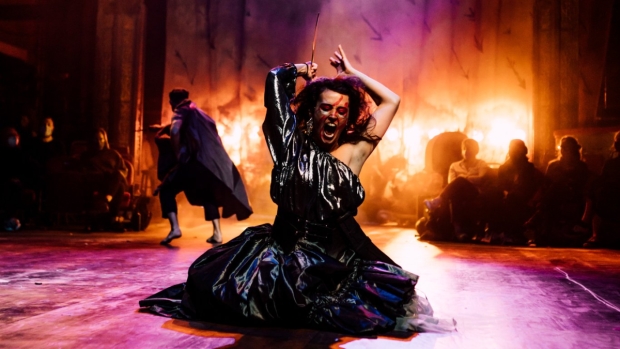Life is a Dream at the Edinburgh Lyceum – review

© Ryan Buchanan
Ever since Aristotle, theatre has been aware of itself as a portal between illusion and reality; a door that swings both ways. Jaques and Prospero are Shakespeare's most playful examples of characters who address explicitly the dichotomy of life and art, but any characters that break the fourth wall, right down to Miranda and Fleabag, are inheritors of that tradition, playing with the question of what's real and what's not.
Tackling it explicitly is the central conceit of Pedro Calderón's Life is a Dream, one of the jewels of Spanish theatre's 17th century Golden Age. A horoscope predicts a terrible fate if ever Prince Segismundo is allowed to rule Poland, so he is locked in a tower to avert disaster. He is let out for one day to test whether the prophecy is true, but then told that his day of freedom was actually a dream. Later, when he is broken out by a band of rebels, he cannot tell the difference between what is real and what is a dream, but he concludes that the most important thing is to do good, whether in dream or reality.
The Lyceum's new take was planned to end their 2019 to 20 season, and it's the first show to reopen their season after lockdown. Wils Wilson's production bravely tackles the dichotomy of reality and artifice head-on by extending and rebuilding the theatre's performance space, creating a thrust stage over the stalls and allowing for performance in the round. A second proscenium and theatre box behind the audience reinforce the idea that we are participants caught in the action that we watch, and that's underlined by the presence of the actors preparing onstage before the action begins.
You could argue that the production wears its symbolism rather heavily, but I found Georgia McGuinness's playful design one of the most exciting things about the show, turning the auditorium into the stage in the manner of an M C Escher drawing. The performances that fill it are good, too. Lorn Macdonald brings Segismundo's character arc to life in a way that's vigorous and (almost) believable, and he's matched by a towering performance from Anna Russell-Martin as Rosaura. Her character's journey is, if anything, even more far-reaching than the Prince's, and she brings it to life in an energetic performance that's impossible to take your eyes off. Alison Peebles brings wounded dignity to the role of Queen Basilio, and I enjoyed the raffish charm of Dyfan Dwyfor's Astolpho.
Jo Clifford's punchy translation manages to retain much of the original's imagery, though I could have done without the jarring Scottishisms of several characters, particularly Clarin who I wished had met her end a lot sooner. I'd also happily have sliced several of the long monologues: they may be an important part of the play's philosophical exposition, but they're pretty snoozeworthy, particularly towards the end of the play when the action should be cranking up.
It's an exciting show despite that, though, one that asks deep questions while retaining a light touch, and it's worth experiencing for the performance space alone. In his programme note, David Greig, the theatre's artistic director, wrote that the experience of 2020 meant it was no longer clear where true illusion lies. Maybe, but I'm sure he'd admit that there's something delightfully real about the fact that Edinburgh's Lyceum is open again, with actors, an audience and applause. If that's a dream, then don't wake me up.










